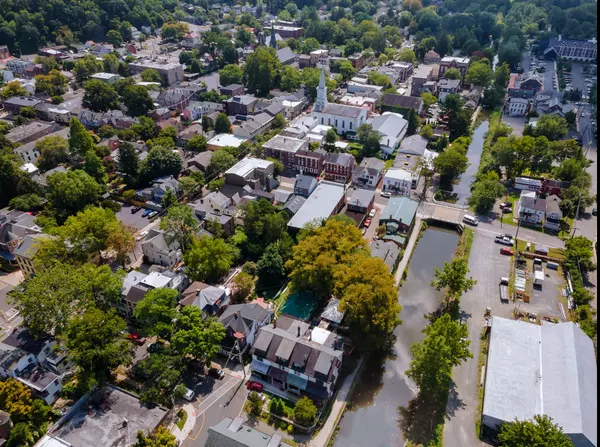Morris County Housing Market Recap – September 2025

Steady Ground in a Shifting Landscape
If Bergen is the state’s barometer, Morris is its stabilizer. The September HousingTRAC data shows Morris County holding firm as the northern market transitions toward equilibrium — not immune to softening, but managing it with quiet efficiency. For institutional investors, this is where fundamentals still dominate sentiment.
Economic Context: The Wait Before the Drop
Inflation’s cooling but not yet cold. New Jersey’s unemployment rate rose to 5.0%, while mortgage rates have eased to 6.3%, down from 7.79% last year. The Otteau Group’s macro section projects that rates will “continue to fall through 2026,” which could “unleash spending growth across the entire real estate economy”.
Job creation remains negative year-to-date (–4,000 jobs statewide), even as the August rebound added 4,900 positions. That uneven recovery translates to selective demand: qualified buyers are returning, but volume remains below the pre-2023 norm.
Core Metrics: Subtle Cooling, Solid Foundation
- Sales: Up +4.4% YOY in September statewide, but Morris mirrors the 1% YTD dip seen elsewhere.
- Inventory: Up +46% since January, now exceeding 17,500 homes statewide — Morris tracking near average.
- Months of Supply: 2.4 months, up slightly from 2.2 last year — signaling stabilization rather than contraction.
- Price Growth: Up +7.5% YOY, but only +1.2% QoQ — the plateau is forming.
The sub-$400K segment is the pressure point, showing an 11% sales decline, while the $400K–$600K tier saw the sharpest inventory jump (+19% YOY). This mid-range is where leverage is shifting quietly from sellers to buyers.
Municipal Performance: Divergent Conditions Beneath the Surface
- Chatham Borough & Township: Still competitive, with months of supply around 1.1–1.7, but showing erratic swings as new listings outpace absorption.
- Boonton & Dover: Supply rising sharply — months of supply 2.3–3.3, reflecting affordability fatigue and slower turnover.
- Jefferson & Denville: Remain balanced but trending toward 2.0–2.3 months, suggesting more inventory pressure ahead.
- Harding & Chester Townships: Luxury micro-markets with thinner buyer pools — months of supply approaching 3.0+, but insulated by wealth demographics.
The county’s Buyer-to-Seller Ratios hover between 50–70 buyers per 100 sellers, down from last year’s 80–90 range — a sign of cooling, not collapse.
My Insight:
Early signs of stress are most likely to surface in the Boonton and Dover corridor, where affordability fatigue and slower absorption are already widening the months-of-supply gap. These submarkets tend to respond quickest when consumer confidence dips, price flexibility shows up sooner, especially in homes under $500K.Jefferson and Denville could follow next, not from distress per se but from creeping inventory and mid-tier saturation. If listing volume continues to rise through winter, those towns may present early value-reset opportunities for investors seeking entry points before rates drop further.
Meanwhile, Chatham, Chester, and Harding remain buffered by wealth demographics any softening there will likely be measured rather than motivated.
Price Trends: Plateau and Pushback
The data confirms what on-the-ground brokers are feeling: appreciation is slowing but not reversing.
Median prices have flattened since Q2, and quarter-over-quarter gains are down to 1.2%, while YOY prices remain up 7.5% statewide.
Price flexibility is emerging mainly in mid-tier and aging inventory. The $2.5M+ segment dipped slightly (–4% listings), but buyer activity in that range remains resilient. This indicates that price normalization is driven more by rate drag than confidence loss — a crucial distinction for institutional capital evaluating timing risk.
Distress Signals: Quiet but Building
While Morris remains among the state’s healthiest counties, early indicators of market fatigue are visible in smaller submarkets:
- Boonton Town shows inventory outpacing buyers 3:1 during parts of Q3.
- Dover and Rockaway Boroughs show months of supply trending up to 3.0–3.5, typical of softening working-class segments.
- East Hanover and Hanover Township reveal volatility in the 1.8–2.7 range — balanced now, but widening spread suggests slower absorption into winter.
These local disparities often precede broader regional corrections by one or two quarters.
My Insight:
This is the early part of the curve where patient capital starts to get rewarded. Boonton, Dover, and Rockaway Boroughs are flashing the first signals of imbalance inventory stacking faster than absorption and buyers hesitating at the mid-tier price points. That kind of spread often precedes discounted resale or note-purchase opportunities, especially on assets with deferred maintenance or dated finishes.Hanover and East Hanover still look stable, but their widening range in months-of-supply tells me we’re watching the first shift from scarcity to selectivity. For investors or servicers, this dispersion is the roadmap these pockets will set the tone for early bulk or note acquisitions before the broader market catches up.
Investment Thesis: Stability Before the Surge
Morris is a fundamentals market — high employment base, diversified industries, and demand buoyed by proximity to NYC and I-80/287 corridors. As statewide rates ease through 2026, this county is poised to outperform in volume recovery.
For institutional investors:
- Target sub-$600K inventory where price flexibility is highest but distress risk remains manageable.
- Monitor 90+ DOM listings in townships with rising months of supply — early REO or short-sale candidates.
- Leverage rental yields in near-transit towns (Denville, Dover, Boonton) before demand reaccelerates mid-2026.
This is a market where patient capital can compound quietly — no flash, just solid fundamentals.
Morris Holds the Line
In a state of transition, Morris County is neither overheated nor faltering. Its data paints a picture of moderation — the kind of market that builds quietly while headlines chase volatility elsewhere.
With rates trending lower, the next cycle of liquidity will favor disciplined acquisition — and Morris County’s blend of stability, proximity, and diversity make it a cornerstone for any North Jersey portfolio.
Categories
Recent Posts





GET MORE INFORMATION

